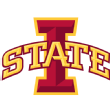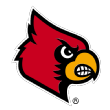Oregon’s defense, Ohio State’s everything and college football’s top surprises
The College GameDay crew analyzes Ohio State’s 52-3 rout of Northwestern and praises the Buckeyes’ consistency offensively and defensively. (1:16)
Northwestern head coach Pat Fitzgerald looked a little punch-drunk. Asked about the adjustments Ohio State made or the surprises it threw at the Wildcats’ defense while the Buckeyes were racking up 52 points and 7.6 yards per play, Fitzgerald interrupted and said, simply, “No, I think they’re really good.”
Northwestern came into Friday night’s battle with the Buckeyes ranked eighth in defensive SP+. The Wildcats did force three first-half three-and-outs, which is an accomplishment in and of itself. Unfortunately, between those three-and-outs came four touchdowns and, to add insult to injury, a 55-yard field goal by Blake Haubeil to end the first half. The Buckeyes led 31-3 after 30 minutes and cruised 52-3.
“They didn’t do anything different than we expected to see,” Fitzgerald said as he started sort of scoff-laughing. (I don’t know how else to describe it.)
“I mean, the plays they ran were the plays we expected to see. That’s kinda what makes you … really, really mad, doesn’t it? You know? When you’re calling plays from the boundary, and they run it, and you don’t stop it? Kinda ticks you off a little bit. So you just tip your hat and wish them well.”
If it’s any condolence, Fitzgerald is but the latest coach to be driven to near insanity by the Ohio State offense this year. The Buckeyes put up 34 points on Michigan State (eighth in defensive SP+), 42 on Cincinnati (31st) and 51 on Indiana (32nd).
Ohio State looks so dominant this year, and it looks so utterly natural, that it’s easy to forget just how many questions we had about this unit heading into the season.
A year ago, the Buckeyes’ run game ranked a paltry 54th in Rushing SP+ — 41st in rushing marginal efficiency (one’s success rate, adjusted for down, distance and field position) and a baffling 120th in rushing marginal explosiveness. This year, through eight weeks: first in Rushing SP+, 11th in efficiency, third in explosiveness.
With the loss of quarterback Dwayne Haskins and three excellent wide receivers, there was reason to wonder if Ohio State might be looking at another slight decline this season. Instead, the Buckeyes have become college football’s most well-rounded team.
Let’s take a look at the hows and whys of Ohio State and other pleasant 2019 surprises. LSU’s own surprising offense has sucked up a lot of this season’s oxygen, and with good reason, but the Tigers’ improvement isn’t the only one worth talking about.
 Ohio State offense
Ohio State offense
Projected SP+ ranking: ninth in offensive SP+
Current SP+ ranking: Fifth
Key personnel lost: Head coach Urban Meyer, quarterback Dwayne Haskins, wide receivers Parris Campbell, Johnnie Dixon and Terry McLaurin, all-conference linemen Michael Jordan and Isaiah Prince.
Key personnel additions: New head coach Ryan Day added Oklahoma State’s Mike Yurcich as passing game coordinator and Georgia transfer Justin Fields as new starting QB.
Biggest changes: The Buckeyes’ explosiveness now matches their recruiting profile again, in part because of Fields’ mobility. Not including sacks, he is carrying about seven times per game at 6.8 yards per carry. They have established a further commitment to the run (from 84th in standard downs run rate to 47th), and they’re simply running much, much better. They were 54th in Rushing SP+ a year ago; now they’re first.
How sustainable is this? To say the least, the talent and upside seem to match the results. Last year’s random struggles were probably the unsustainable part.
Of course, Ohio State isn’t really an offense-first team. We led with the O because it had the tougher challenge this week against offense-deprived Northwestern, but the Buckeyes moved to first in defensive SP+ this week too. So, we probably should give that unit its own section.
 Ohio State defense
Ohio State defense
Projected SP+ ranking: 13th in defensive SP+
Current SP+ ranking: First
Key personnel lost: Defensive coordinator Greg Schiano, co-coordinator Alex Grinch, defensive end Nick Bosa, defensive tackle Dre’Mont Jones, cornerback Kendall Sheffield.
Key personnel additions: Day named Michigan’s Greg Mattison and the 49ers’ Jeff Hafley as co-coordinators and got to replace banged-up sophomore end Chase Young with world-destroying junior end Chase Young.
Biggest changes: The biggest change for this team has been in going from good to utterly devastating in the front seven: They’ve gone from 10th to first in stuff rate, from 36th to third in sack rate and from 27th to second in havoc rate*. That certainly has helped out the secondary, too, as opponents are falling into passing downs more frequently, and the pass rush is terrorizing quarterbacks. The result: an improvement from 62nd to second in Passing SP+.
How sustainable is this? Again, the talent suggests this is what Ohio State should have been all along. It does bear mentioning, though, that while the offense has faced quite a few strong defenses, the same can’t be said of the Buckeyes D. Per SP+, Indiana’s is the only top-40 offense they’ve faced, and Hoosiers star quarterback Michael Penix Jr. didn’t play.
This will get rectified soon enough. Wisconsin’s offense ranks 22nd in offensive SP+, and November opponent Penn State ranks eighth.
* Havoc rate is a team’s total combined tackles for loss, passes defensed and forced fumbles divided by total plays.
 Oregon defense
Oregon defense
Projected SP+ ranking: 40th in defensive SP+
Current SP+ ranking: Eighth
Key personnel lost: Defensive coordinator Jim Leavitt, TFL/sacks leaders Justin Hollins and Jalen Jelks, safety Ugochukwu Amadi.
Key personnel additions: Head coach Mario Cristobal made one of the best hires of the offseason by bringing in Boise State’s Andy Avalos as coordinator. He also signed instant-impact recruits in freshmen Mase Funa and Kayvon Thibodeaux.
Biggest changes: I mean, you name it.
• Overall efficiency (from 43rd to 14th in marginal efficiency)
• Overall explosiveness (from 69th to 18th in marginal explosiveness)
• Red zone defense (from 29th to fourth in points allowed per scoring opportunity)
• Run defense (from 64th to 37th in Rushing SP+)
• Pass defense (from 74th to 14th in Passing SP+)
• Pass rush (from 83rd to 35th in sack rate)
It’s hard to find a category in which Oregon isn’t better than last year, and it bears mentioning that last season (when the Ducks finished 50th in defensive SP+) was a drastic improvement over where they had been just a couple of years earlier (106th in 2016).
How sustainable is this? I became more convinced of Oregon’s sustainability this past weekend during the win over Washington. The Ducks did fall from first to eighth in defensive SP+ because of the Huskies’ output (31 points, 6.5 yards per play), but Oregon rounded into form as the game wore on. The Ducks allowed four touchdowns in Washington’s first seven possessions, gave up a field goal on the eighth and finished the game forcing a three-and-out, another three-and-out and a turnover on downs.
First in defensive SP+ wasn’t sustainable, but top 10 or top 15? Absolutely.
 Iowa State offense
Iowa State offense
Projected SP+ ranking: 71st in offensive SP+
Current SP+ ranking: 27th
Key personnel lost: Running back David Montgomery, wideout Hakeem Butler. The coaching staff was virtually untouched.
Key personnel additions: Starting quarterback Brock Purdy from day one was going to add an automatic boost to the numbers (he didn’t become starter until a few games into the 2018 campaign), and the addition of freshman running back Breece Hall and Arkansas receiver transfer La’Michael Pettway has influenced Iowa State’s explosiveness and efficiency ratings, respectively.
Biggest changes: Hall’s 75- and 30-yard touchdown runs against Texas Tech were pretty clear indicators of what he brings to the table; ISU has improved from 108th to 37th in rushing marginal explosiveness this year. Plus, between Purdy’s improvement and that of a senior-heavy offensive line, the Cyclones have cut down quite a bit on negative plays (from 80th to 30th in sack rate, from 98th to 50th in stuff rate).
How sustainable is this? ISU is avoiding negative plays and staying ahead of the chains despite extreme youth at QB (Purdy is a true sophomore) and RB. We’ll see what happens when there’s churn on the line next year, but for now, this appears legit.
 Baylor defense
Baylor defense
Projected SP+ ranking: 68th in defensive SP+
Current SP+ ranking: 25th
Key personnel lost: Pretty much none.
Key personnel additions: Pretty much none.
Biggest changes: Back in the preseason, Baylor head coach Matt Rhule told media that he wanted to move to more of a 3-3-5 defensive structure, because, “Our main issue is just eliminating big plays. We have to get more speed on the field, try to run things down, pinch plays off. That could change in three or four days, but as of right now, that’s the plan going in.”
So far, so good. The Bears’ big-play prevention ability is by far the biggest change from last season; they were 117th in marginal explosiveness (81st against the pass) in 2018, and they’re eighth and second, respectively, this fall. Despite a decrease in overall size, they’ve also drastically improved their run defense: They have gone from 99th to ninth in Rushing SP+.
How sustainable is this? Baylor also passed a major test on Saturday. The Bears held Oklahoma State to a 42% success rate and, more important, five gains of 20-plus yards (two below the Cowboys’ average). And the Bears did it without injured star linebacker Clay Johnston, who is out for the season. Life without your defensive QB is tricky, and maybe Baylor’s numbers will fall a hair, but the Bears are infinitely better than they were at this time last year.
 Louisville offense
Louisville offense
Projected SP+ ranking: 89th in offensive SP+
Current SP+ ranking: 31st
Key personnel lost: Head coach Bobby Petrino and pretty much the entire offensive coaching staff, plus wide receiver Jaylen Smith and a couple of starting linemen.
Key personnel additions: New head coach Scott Satterfield brought in a bran-new staff, which includes offensive coordinator Dwayne Ledford. Freshman QB Evan Conley has contributed, as has redshirt freshman RB Javian Hawkins. So, quite a bit of new blood.
Biggest changes: The Cardinals are dramatically ahead of their 2018 pace in most categories, even after Saturday’s 45-10 loss to Clemson. But the most impressive improvement comes with the forward pass. Despite shuffling through three QBs and leaning heavily on Micale Cunningham, a sophomore who was excellent on the ground but dreadful through the air in 2018, the Cardinals have gone from 118th to 15th in Passing SP+ and from 115th to 14th in Passing Downs SP+. They have improved equally in terms of both efficiency and explosiveness.
How sustainable is this? In the short term, there probably remain some ups and downs. Long term, though, Cunningham and Hawkins are scheduled to be around a while, and three of the top five receiving targets are freshmen or sophomores.
 Pitt defense
Pitt defense
Projected SP+ ranking: 58th in defensive SP+
Current SP+ ranking: 15th
Key personnel lost: None on the defensive coaching staff, really, but a healthy portion of the front seven’s two-deep has been recycled. That includes a preseason injury to star end Rashad Weaver.
Key personnel additions: Nothing really, aside from inconsistent blue-chip freshman DB Paris Ford getting replaced by stud sophomore blue-chipper Paris Ford.
Biggest changes: The increase in experience in the secondary has produced massive results: The Panthers have gone from 52nd to ninth in Passing SP+ and from 42nd to third in passing marginal efficiency. This also is due in part to a pass rush that has improved by leaps and bounds despite losing three of last year’s top four pass-rushers. Sophomore Jaylen Twyman‘s star turn (7 sacks, 11 run stuffs) has been a godsend.
How sustainable is this? One has to wonder about depth in the front seven at this point, but the Panthers have avoided any more catastrophic in-season injuries. As long as that continues, so will the strong defensive results.
 Navy defense
Navy defense
Projected SP+ ranking: 125th in defensive SP+
Current SP+ ranking: 46th
Key personnel lost: Most of last year’s defensive coaching staff (including longtime coordinator Dale Pehrson), plus the top two defensive ends, inside linebackers and safeties.
Key personnel additions: After an absolutely dreadful defensive performance in every possible way, head coach Ken Niumatalolo overhauled his staff, bringing in defensive coordinator Brian Newberry from Kennesaw State, plus co-coordinator Brian Norwood and some new position coaches. A healthy batch of sophomores contributors — LB Diego Fagot, safety Kevin Brennan, corner Michael McMorris — also has emerged at just the right time.
Biggest changes: After years of bend-don’t-break stylings, Navy has become more aggressive. That’s a scary proposition when you likely don’t have an athletic advantage over your opponent, but it’s working — really, really well. The Midshipmen have gone from 107th to 13th in marginal efficiency and from 126th to 11th in havoc rate. Their explosiveness numbers have been better in the process too. They still leaked a few big plays in the loss to Memphis, but they’ve otherwise allowed just 12 points per game.
How sustainable is this? Saturday’s game against Tulane will tell us a lot. Navy hasn’t dealt with that many talent mismatches yet but faces the Green Wave, Notre Dame, SMU, Houston and Army in the back half of the season. Tulane is ultra-efficient; if the Midshipmen hold it to a 40% success rate or lower, we’ll know this is pretty real.
 Memphis defense
Memphis defense
Projected SP+ ranking: 66th in defensive SP+
Current SP+ ranking: 36th
Key personnel lost: Defensive coordinator Chris Ball, plus a couple of position coaches. Not much changed on the two-deep, though.
Key personnel additions: Mike Norvell plucked coordinator Adam Fuller from Marshall and remodeled the secondary with sophomores and freshmen.
Biggest changes: The youth in the secondary has more than held up — it has improved matters. The Tigers struggled drastically when it came to simply getting off the field when they got the chance, but this is no longer an issue. They’ve gone from 97th to 18th in Passing Downs SP+ and from 114th to 25th in third-and-long success rate allowed. They also have improved in overall big-play prevention (from 95th to 32nd in marginal explosiveness).
How sustainable is this? After a brief cameo in the defensive SP+ top 10, the Tigers have settled into a more sustainable range here, I think, and none of the numbers is so good that it can’t be replicated moving forward. UL Monroe sucked Memphis into a bit of a shootout (a 52-33 Tigers win), but Memphis has allowed just 18.3 points per game otherwise.
 Air Force offense
Air Force offense
Projected SP+ ranking: 80th in offensive SP+
Current SP+ ranking: 25th
Key personnel lost: Not much of anything, beyond wide receivers Marcus Bennett and Ronald Cleveland and a couple of O-linemen.
Key personnel additions: Not much of anything.
Biggest changes: Air Force’s drastic 2019 improvement seems to be a product of self-scouting. The Falcons have made a concerted effort to get their playmakers more opportunities on the edge; speed backs Kadin Remsberg, Christian Mallard and Joshua Stoner are averaging 17.4 carries per game between them, and leading wideout Geraud Sanders already has nearly as many receptions in seven games (20) as Bennett had last year in 12 (24).
This has paid off. The Falcons have gone from 104th to 58th in rushing marginal explosiveness, and Air Force QBs have gone from 16.9 yards per completion to 23.4. They have scored 140 points in their past three MWC games.
How sustainable is this? That 140-in-three pace probably will not last, but if they put 30-plus points on Utah State — the best remaining defense on the schedule — this week, that’s a sign that the ceiling remains high. And after back-to-back 5-7 seasons, SP+ gives Air Force a 59% chance of reaching 9-3 or better.